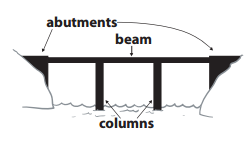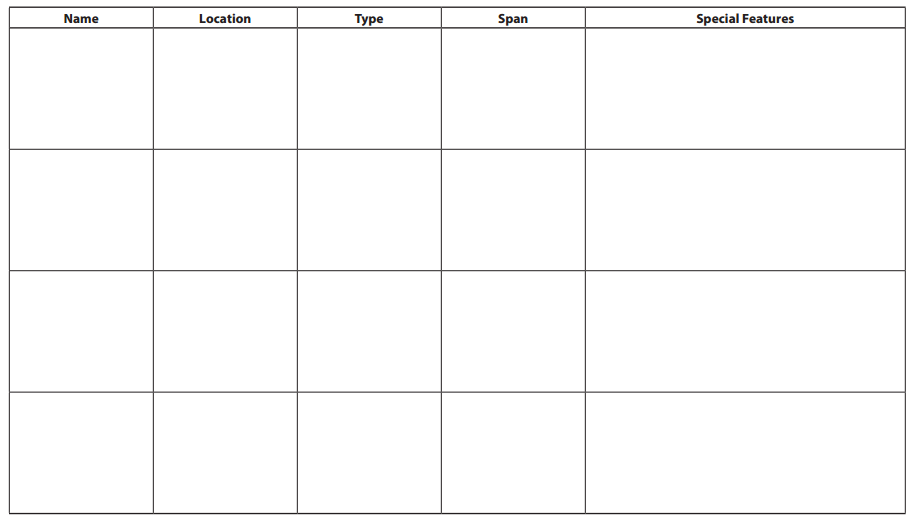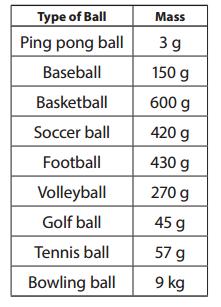The solutions to Bridges in Mathematics Grade 3 Home Connections Answer Key Unit 8 Module 1 can help students to clear their doubts quickly.
Bridges in Mathematics Grade 3 Home Connections Answer Key Unit 8 Module 1
Bridges in Mathematics Grade 3 Home Connections Unit 8 Module 1 Session 2 Answer Key
Looking for Bridges
Note to Families
We are beginning a unit of study about bridges. Please take some time to locate examples of the three kinds of bridges shown below. You can find them in your neighborhood, or you could take a drive around your town or city. If you have access to the Internet, you could also find examples online. You might also find examples in books at home or the library. For each bridge, record its name, location, type (beam, arch, or suspension), span length (an estimation will do), and other special features on the table on the back of this sheet.
Three Basic Kinds of Bridges
Beam Bridge
A beam bridge is constructed of a beam supported by at least two abutments or columns. Beam bridges tend to be simple and relatively inexpensive to build. They are most useful for bridging short spans.

Arch Bridge
An arch bridge is made of an arch between two abutments. It may be made of just one arch between two abutments or of many arches, columns, and abutments linked together, which is called an arcade.

Suspension Bridge
Suspension bridges are made of roadways suspended from cables and suspenders that hang from towers. The cables extend all the way from an anchorage at one end of the bridge to another anchorage at the other end of the bridge. They are the most expensive kind of bridge to build and are capable of spanning the greatest distances.


Some additional information that we learned together:
Answer:
Bridges in Mathematics Grade 3 Home Connections Unit 8 Module 1 Session 4 Answer Key
Comparing Mass
Question 1.
The table shows the mass of different types of balls used in sports. Use the table to answer the questions below.

a. Which ball has the most mass?
Answer: bowling ball has most mass.
b. Which two balls are closest in mass?
Answer: Soccer ball and football are closest in mass.
c. What is the difference in mass between the bowling ball and the basketball? Show your work.
Answer:
9000 g – 600 g = 8400 g or 8.4 kg
d. Do two tennis balls have more mass or less mass than a baseball?
Answer: less
e. How many ping pong balls equal the mass of one golf ball? Show your work.

Answer: 15 ping pong balls equal the mass of one golf ball.
Question 2.
Solve the problems. Show all your work.
a. The Arctic Animals Zoo’s female caribou has a mass of 82 kg. The female polar bear’s mass is 161 kg. How much more massive is the polar bear than the caribou?
Answer:
Given,
The Arctic Animals Zoo’s female caribou has a mass of 82 kg. The female polar bear’s mass is 161 kg.
161 – 82 = 79 kg
b. The zookeeper says that a wolverine’s mass is 3 times as much as that of an arctic hare. If a typical arctic hare has a mass of 5 kg, what is the mass of a typical wolverine?
Answer:
Given,
The zookeeper says that a wolverine’s mass is 3 times as much as that of an arctic hare.
A typical arctic hare has a mass of 5 kg.
5 × 3 = 15 kg
c. The refrigerator where the black bear’s food is stored holds 35 kg of food. If the bear eats 5 kg of food a day, how many days’ worth of bear food can be stored in the refrigerator?
Answer:
Given,
The refrigerator where the black bear’s food is stored holds 35 kg of food.
The bear eats 5 kg of food a day
35 ÷ 5 = 7 days worth of food
d. CHALLENGE The Arctic Animals Zoo is planning a new habitat for 4 arctic wolves. Each wolf eats about 2 kilograms of food per day. How much food does the zookeeper need to have ready for the wolves’ first 7 days at the zoo?

Answer:
Given,
The Arctic Animals Zoo is planning a new habitat for 4 arctic wolves. Each wolf eats about 2 kilograms of food per day.
4 × 2 = 8 kilograms
7 days
8 × 7 = 56 kilograms
Thus, the zookeeper needs to have ready 56 kg food for the wolves’ first 7 days at the zoo.